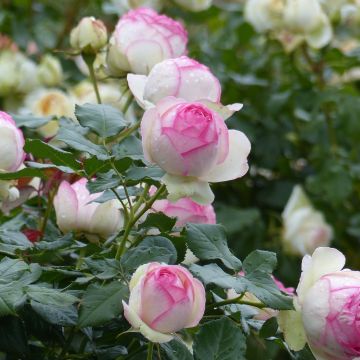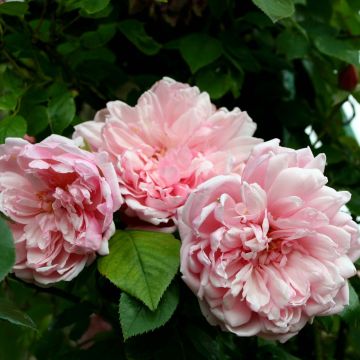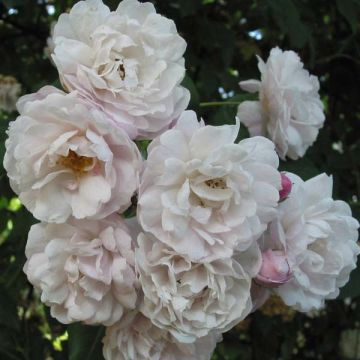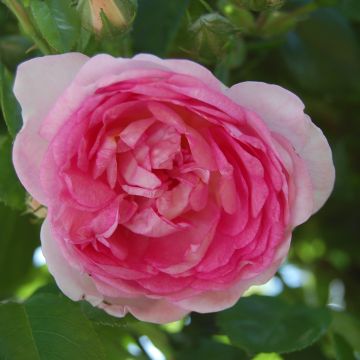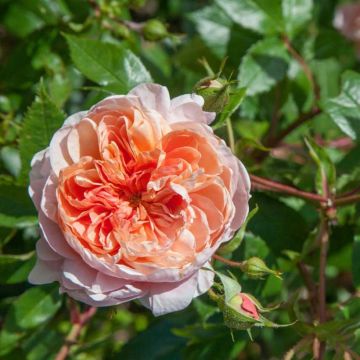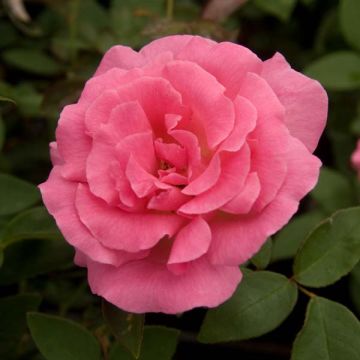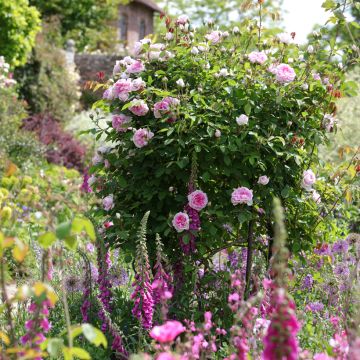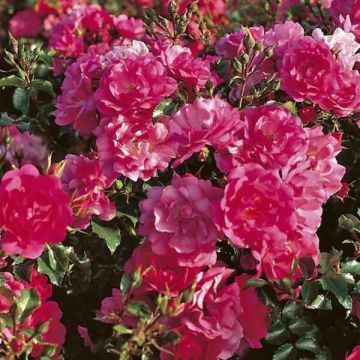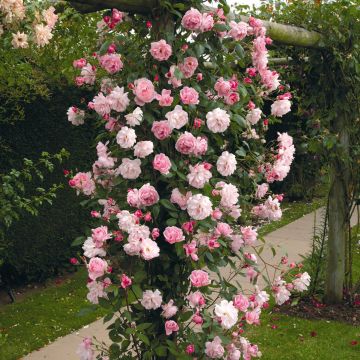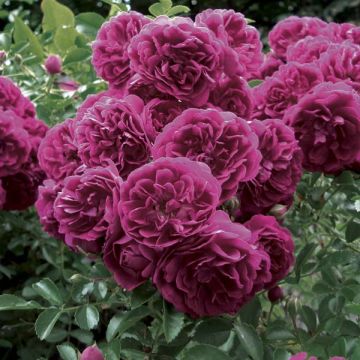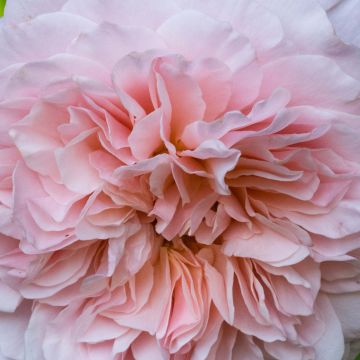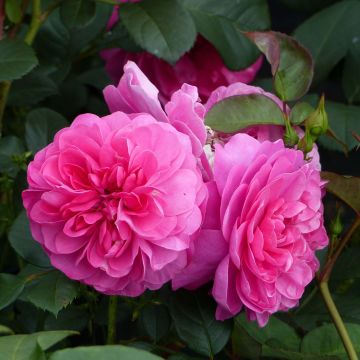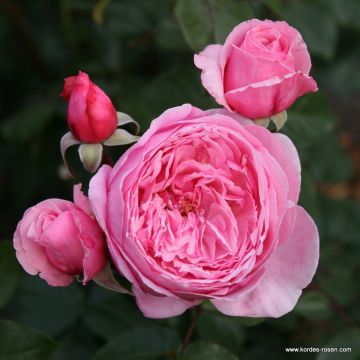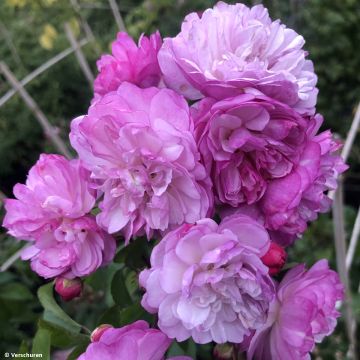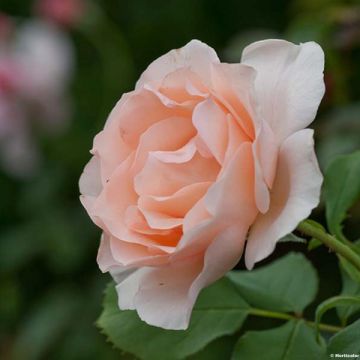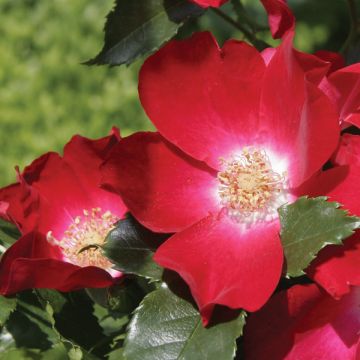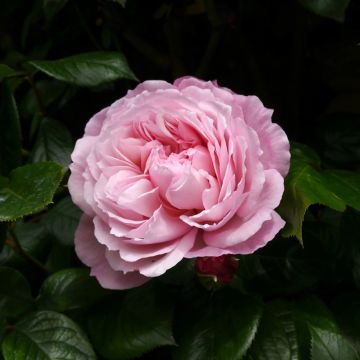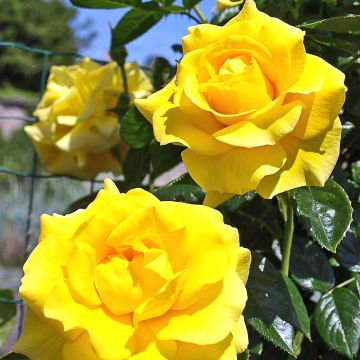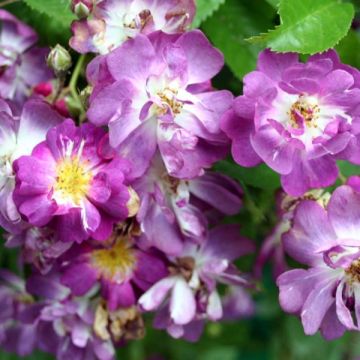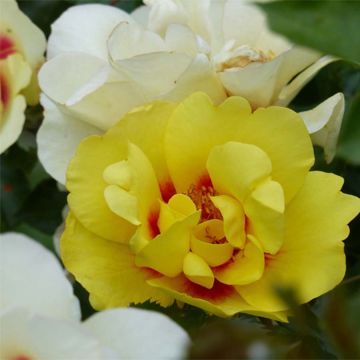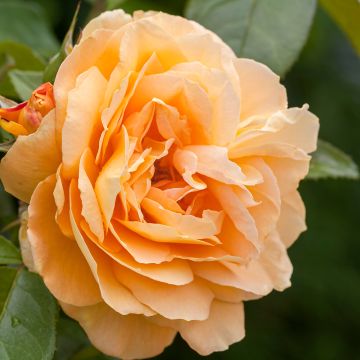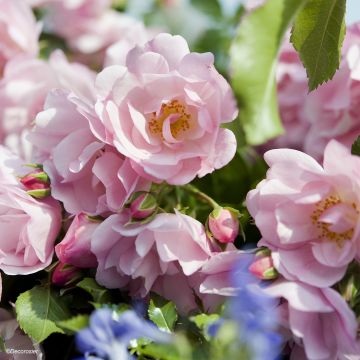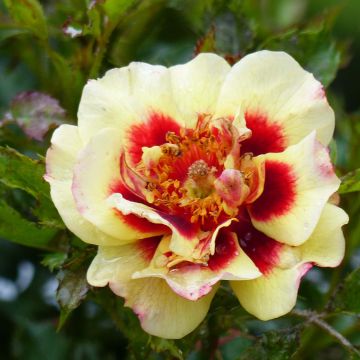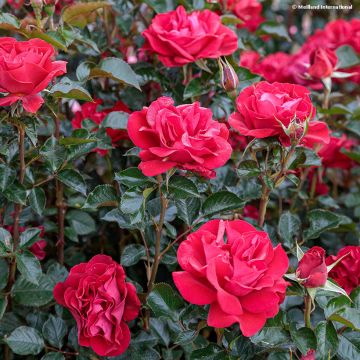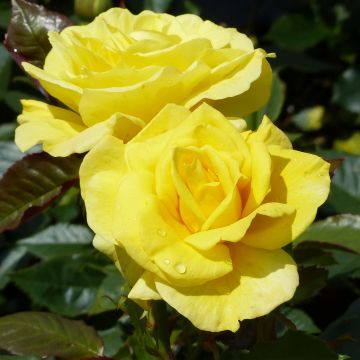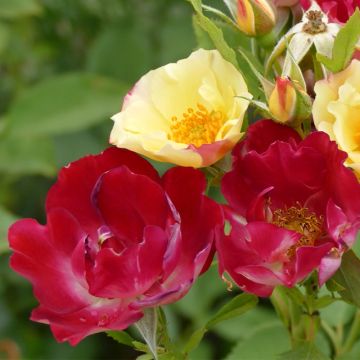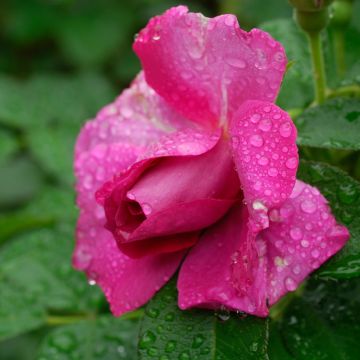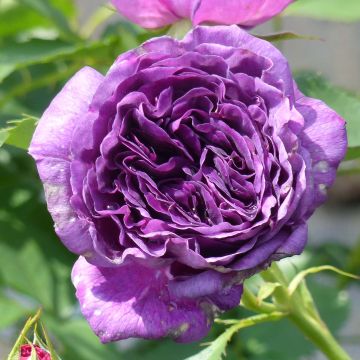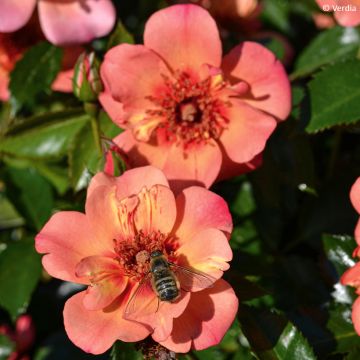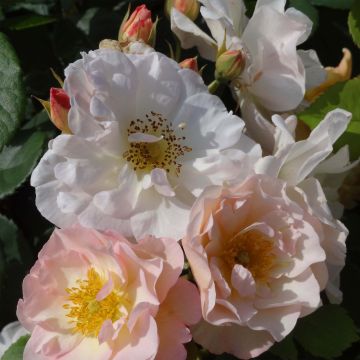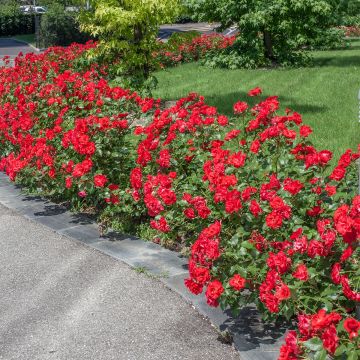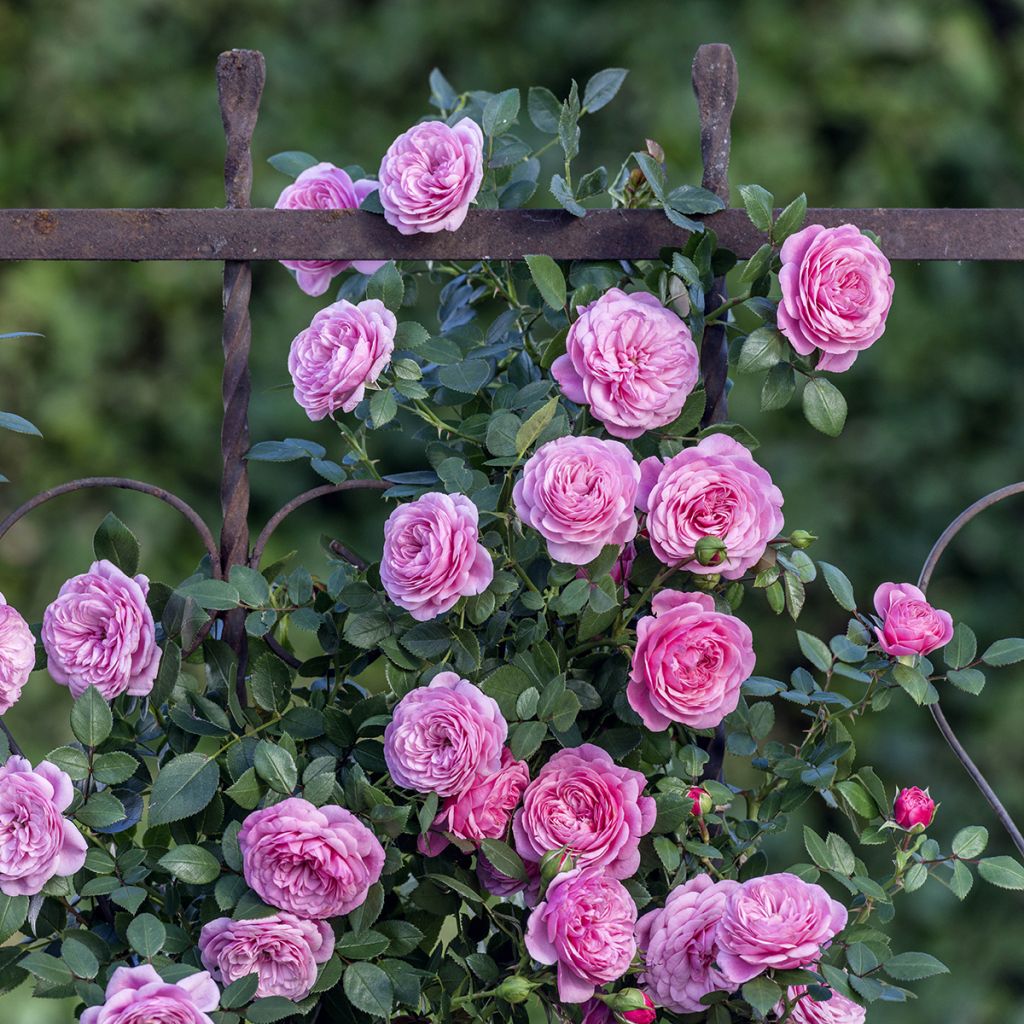

Rosier grimpant Eva
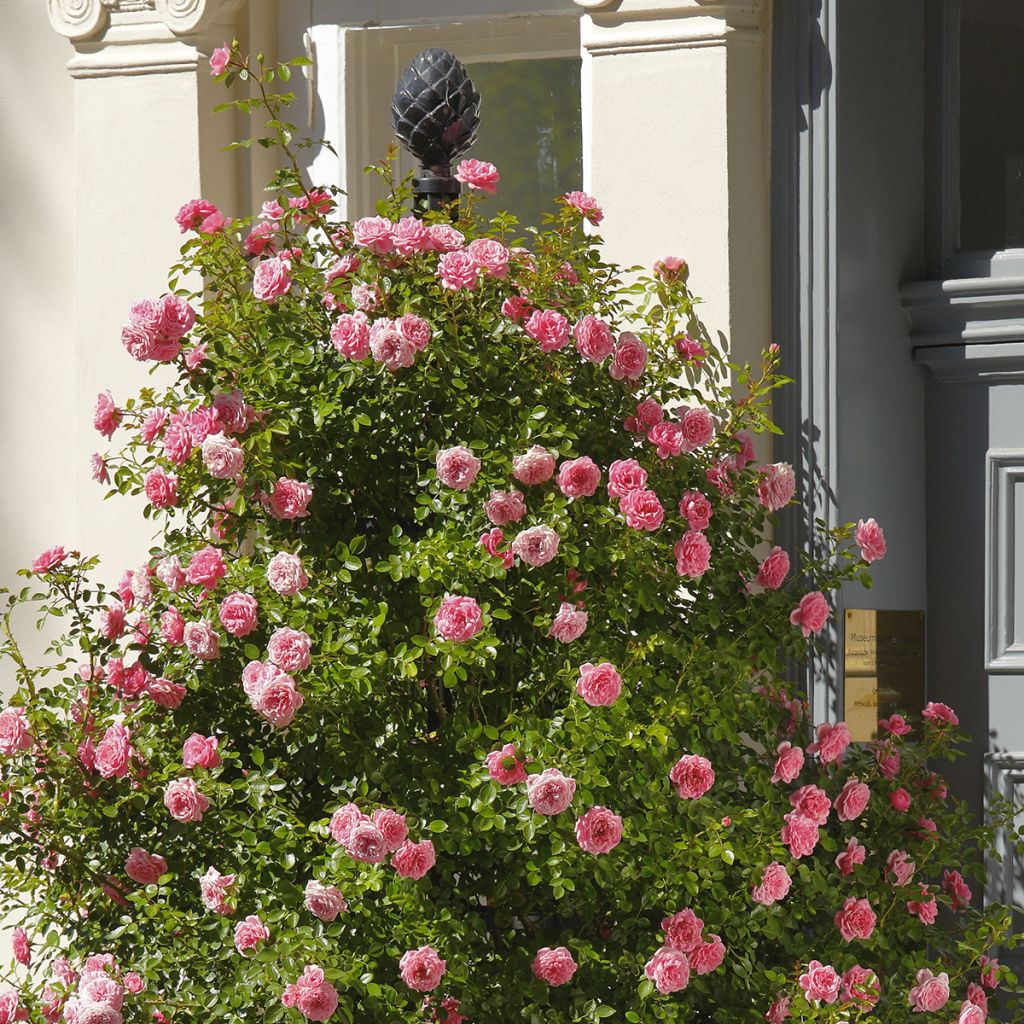

Rosier grimpant Eva
Rosa Starlet Rose 'Eva' - Climbing Rose
Rosa Starlet® Rose Eva ® 'Tan 07891'
Tan 07891
Thanks to the individuals (for order preparation and shipping), the wood received seems healthy. Planted close to the variety "Sleeping Beauty", I am now patiently waiting for it to take root... (or not?).
Thierry, 10/06/2023
Why not try an alternative variety in stock?
View all →This plant carries a 24 months recovery warranty
More information
We guarantee the quality of our plants for a full growing cycle, and will replace at our expense any plant that fails to recover under normal climatic and planting conditions.
From €5.90 for pickup delivery and €6.90 for home delivery
Express home delivery from €8.90.
From €5.90 for pickup delivery and €6.90 for home delivery
Express home delivery from €8.90.
Does this plant fit my garden?
Set up your Plantfit profile →
Description
The Starlet Rose 'Eva' Rose allows everyone to enjoy the charms of a climbing rose even without a garden. Indeed, the moderate growth of this variety allows it to be easily and sustainably cultivated in a pot or container. From mid-spring, this rose produces an abundance of magnificent double roses of intense pink colour, which succeed each other until autumn. With its well-furnished vegetation and its long-lasting flowering, this rose is unmatched for enhancing a living space such as a terrace, patio, or balcony. Easy to grow and requiring little maintenance, this hardy rose can remain outdoors during winter.
The Rose is the most symbolic member of the large botanical family Rosaceae, which includes nearly 5000 species of trees, shrubs, and herbaceous plants almost all around the globe. A favourite genus of breeders, named Rosa in Latin and consecrated queen of flowers, the rose comes in thousands of varieties of all colours and dimensions.
The 'Eva' Mini Climbing Rose is part of the series "The Starlets of the Roaring Twenties," dedicated to terraces and balconies. These compact climbers are suitable for pot cultivation and offer long-lasting flowering. 'Eva' has lush vegetation, but its size remains compatible with a balcony. At maturity, it forms a beautiful erect tuft that reaches between 1.50 m (5ft) and 2 m (7ft) in height, for about 1 m (3ft) to 1.20 m (4ft) in width. If the vegetation becomes too wide, performing light pruning (during the growing season) to adjust its dimensions to the available space is always possible. The very dense foliage, of a dark green colour with a slight sheen, serves as a true showcase for the flowering by offering it a dark background that magnifies it. From mid-spring to May, double roses appear, composed of numerous petals imbricated with each other. The rounded shape of the petals, the heart of certain flowers sometimes evoking old quartered roses, and their colour give these flowers an irresistible romantic charm, compensating for their lack of fragrance. Produced abundantly, Eva's roses capture attention. The generous flowering repeats until the first frosts in this repeat-flowering variety. It is advisable to remove faded flowers to promote the growth of new flower buds.
Showing good hardiness, up to -20 °C (- 4°F) approximately, Eva grows in sunny, even semi-shaded positions, although flowering will be more abundant in the sun. Regular watering and fertilization during the season will allow it to give its best.
The 'Eva' Mini Climbing Rose is an excellent choice to enhance a friendly space, even in a small size. Its abundant bright flowering creates an attractive scene throughout the summer. To accompany it, if space allows, associate it with climbers with fragrant flowering, such as Lonicera Japonica Mint Crisp, a Honeysuckle with variegated leaves that you can position in the least sun-exposed corner. Its semi-evergreen yellow and green foliage is already decorative for a good part of the year. Above all, its yellow flowers gradually turning white will perfume your balcony or terrace from June to September. Or opt for an Azores Jasmine (Jasminum azoricum), with small white star-shaped flowers that bloom all summer, diffusing a delicious fragrance. To enjoy abundant flowering, look to the Clematis, which offers an entire range of plant colours and single or double flowers of all sizes.
Report an error about the product description
Plant habit
Flowering
Foliage
Botanical data
Rosa
Starlet® Rose Eva ® 'Tan 07891'
Rosaceae
Tan 07891
Cultivar or hybrid
Other Climbing Roses
Planting and care
This climbing 'Eva' rose reaches only 1.50m (5ft) to 2m (7ft) in height, which allows it to be kept in a pot on the balcony or patio. Place it in the sun for at least a few hours daily, and it will flower better. Water it regularly, especially in summer, as the soil should not dry out. In spring, fertilise it with a potassium-dominant fertilizer (the K of the N-P-K balance), preferably organic or slow-release, to accompany the flowering for several months. Remove faded flowers as they appear; this allows the plant to continue flowering abundantly without wasting energy on fruit formation. In spring, prune it at the end of frost, taking the opportunity to cut back the oldest branches very low to encourage the emergence of new shoots. Keep a few main stems by lightly shortening them.
Plant the 'Eva' rose in your garden between November and March. To ensure optimal growth, use well-prepared and well-drained soil. Roses typically grow better in heavier clay soils, rather than light soils. If your soil is too sandy, compact, or dry in the summer, mix in compost or well-rotted manure at the bottom of the planting hole. However, be cautious of waterlogged soils in the winter as this can harm the plant. Choose a sunny location with partial shade for planting the rose. Keep in mind that roses require a lot of nutrients, so it's best to use a specific fertiliser at the beginning of the growing season and regularly throughout the flowering period.
Planting period
Intended location
Care
-
, onOrder confirmed
Reply from on Promesse de fleurs
Roses by purpose
Haven't found what you were looking for?
Hardiness is the lowest winter temperature a plant can endure without suffering serious damage or even dying. However, hardiness is affected by location (a sheltered area, such as a patio), protection (winter cover) and soil type (hardiness is improved by well-drained soil).

Photo Sharing Terms & Conditions
In order to encourage gardeners to interact and share their experiences, Promesse de fleurs offers various media enabling content to be uploaded onto its Site - in particular via the ‘Photo sharing’ module.
The User agrees to refrain from:
- Posting any content that is illegal, prejudicial, insulting, racist, inciteful to hatred, revisionist, contrary to public decency, that infringes on privacy or on the privacy rights of third parties, in particular the publicity rights of persons and goods, intellectual property rights, or the right to privacy.
- Submitting content on behalf of a third party;
- Impersonate the identity of a third party and/or publish any personal information about a third party;
In general, the User undertakes to refrain from any unethical behaviour.
All Content (in particular text, comments, files, images, photos, videos, creative works, etc.), which may be subject to property or intellectual property rights, image or other private rights, shall remain the property of the User, subject to the limited rights granted by the terms of the licence granted by Promesse de fleurs as stated below. Users are at liberty to publish or not to publish such Content on the Site, notably via the ‘Photo Sharing’ facility, and accept that this Content shall be made public and freely accessible, notably on the Internet.
Users further acknowledge, undertake to have ,and guarantee that they hold all necessary rights and permissions to publish such material on the Site, in particular with regard to the legislation in force pertaining to any privacy, property, intellectual property, image, or contractual rights, or rights of any other nature. By publishing such Content on the Site, Users acknowledge accepting full liability as publishers of the Content within the meaning of the law, and grant Promesse de fleurs, free of charge, an inclusive, worldwide licence for the said Content for the entire duration of its publication, including all reproduction, representation, up/downloading, displaying, performing, transmission, and storage rights.
Users also grant permission for their name to be linked to the Content and accept that this link may not always be made available.
By engaging in posting material, Users consent to their Content becoming automatically accessible on the Internet, in particular on other sites and/or blogs and/or web pages of the Promesse de fleurs site, including in particular social pages and the Promesse de fleurs catalogue.
Users may secure the removal of entrusted content free of charge by issuing a simple request via our contact form.
The flowering period indicated on our website applies to countries and regions located in USDA zone 8 (France, the United Kingdom, Ireland, the Netherlands, etc.)
It will vary according to where you live:
- In zones 9 to 10 (Italy, Spain, Greece, etc.), flowering will occur about 2 to 4 weeks earlier.
- In zones 6 to 7 (Germany, Poland, Slovenia, and lower mountainous regions), flowering will be delayed by 2 to 3 weeks.
- In zone 5 (Central Europe, Scandinavia), blooming will be delayed by 3 to 5 weeks.
In temperate climates, pruning of spring-flowering shrubs (forsythia, spireas, etc.) should be done just after flowering.
Pruning of summer-flowering shrubs (Indian Lilac, Perovskia, etc.) can be done in winter or spring.
In cold regions as well as with frost-sensitive plants, avoid pruning too early when severe frosts may still occur.
The planting period indicated on our website applies to countries and regions located in USDA zone 8 (France, United Kingdom, Ireland, Netherlands).
It will vary according to where you live:
- In Mediterranean zones (Marseille, Madrid, Milan, etc.), autumn and winter are the best planting periods.
- In continental zones (Strasbourg, Munich, Vienna, etc.), delay planting by 2 to 3 weeks in spring and bring it forward by 2 to 4 weeks in autumn.
- In mountainous regions (the Alps, Pyrenees, Carpathians, etc.), it is best to plant in late spring (May-June) or late summer (August-September).
The harvesting period indicated on our website applies to countries and regions in USDA zone 8 (France, England, Ireland, the Netherlands).
In colder areas (Scandinavia, Poland, Austria...) fruit and vegetable harvests are likely to be delayed by 3-4 weeks.
In warmer areas (Italy, Spain, Greece, etc.), harvesting will probably take place earlier, depending on weather conditions.
The sowing periods indicated on our website apply to countries and regions within USDA Zone 8 (France, UK, Ireland, Netherlands).
In colder areas (Scandinavia, Poland, Austria...), delay any outdoor sowing by 3-4 weeks, or sow under glass.
In warmer climes (Italy, Spain, Greece, etc.), bring outdoor sowing forward by a few weeks.

































